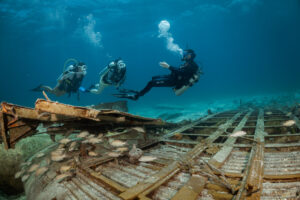It has always been important to clean and disinfect all equipment used to teach CPR and first-aid courses, but the pandemic has made everyone more conscious about it. Proper equipment sanitation begins before the course with equipment, and continues during the course; it is important that all participants follow good hygiene practices. This includes thoroughly washing hands and using hand sanitizer following local regulations and WHO guidelines. It would be best if you had hand sanitizer available to all participants throughout the course.
Also, note the US FDA (Food and Drug Administration) has issued warnings about certain hand sanitizers found to have methanol (wood alcohol), 1-propanol (both of which are toxic), have contamination or lack the listed but required amount of disinfectant. Go to this site for the warning and the FDA’s product warning list.
CPR Mannequin
As always, it is important to follow CPR mannequin disinfection procedures during and after training. Check with the mannequin manufacturer for cleaning recommendations specific to their products, and with manufacturers and local health authorities for any relevant updates before conducting the Mannequin Cleaning Workshop in the EFR® Instructor course. Commonly accepted practices include:
- Each participant should ideally be given their own mannequin. However, if this is logistically not feasible and more than one student will be sharing the same mannequin, ensure that each student has a separate set of mannequin lungs for their personal use with that mannequin or as directed by your local health authority or Resuscitation Council, as well as an individual face shield and wipes. Disinfect all surfaces of the mannequin between students using approved disinfectants/wipes per manufacturer and local health guidelines, with particular attention to face and mouth/nose cavities. Properly dispose of all wipes, lungs and other barriers at the end of each session. Please also ensure that all applicable social distancing measures are being followed if sharing mannequins during training.
- Between participants the mannequin should be wiped down with 70 percent alcohol and left to dry before the next use.
- Remove and replace the mannequin lungs. New lungs should be used for each session.
- After the course, soak reusable mannequin faces in an appropriate disinfectant solution for at least 10 minutes. Common recommendations include ¼ cup of bleach per gallon of water (4 litres).
- Once soaked, rinse the equipment in fresh water and allow it to dry before packing away.
Please check manufacturer’s guidelines and updates along with your local resuscitation council for further information.
First-Aid Equipment
All equipment used throughout EFR courses should be disinfected after use. Compression and triangular bandages used during training can be washed in warm, soapy water and left to dry in the sun. AED trainers should be wiped down with disinfectant. It is important to read and follow the cleaning instructions on each piece of equipment, which may vary from brand to brand. Between sessions, disinfect all frequently touched surfaces such as tables, door handles and light switches, etc. following local regulations and WHO guidelines.
By following these guidelines, we can greatly reduce the risks involved for students. Ideally, make your disinfection policy known to your students and customers beforehand – this assures them that you are following the best practices, are actively taking precautions for their health and safety, and encourages their cooperation and participation in carrying them out as required.
The post Sanitizing and Cleaning CPR/First-Aid Training Equipment appeared first on PADI Pros.
Uncategorized, cpr, Emergency First Response, first aidPADI Pros


